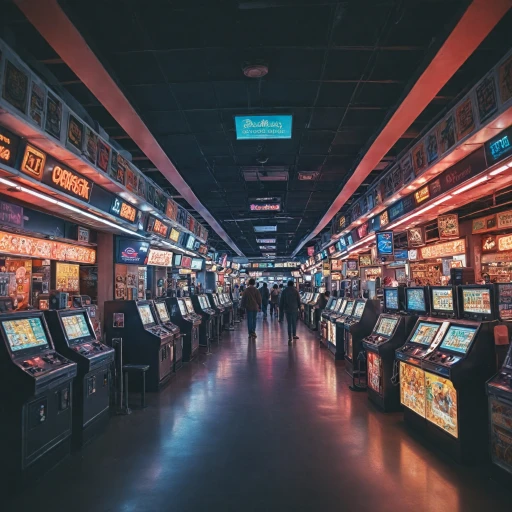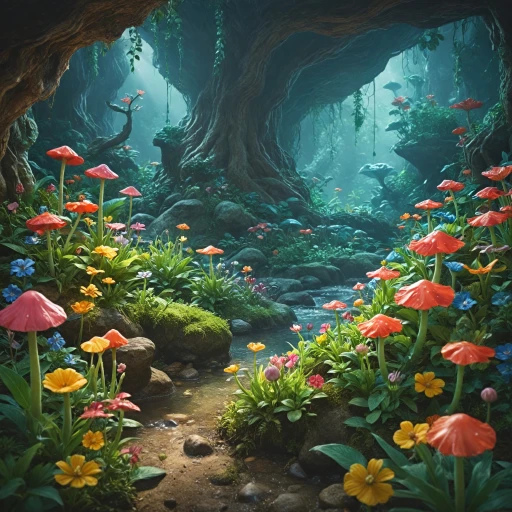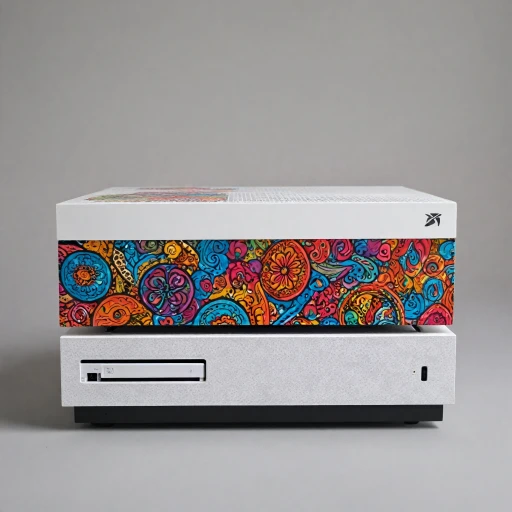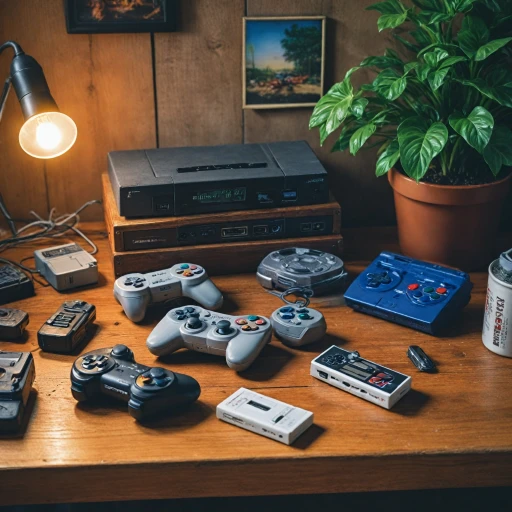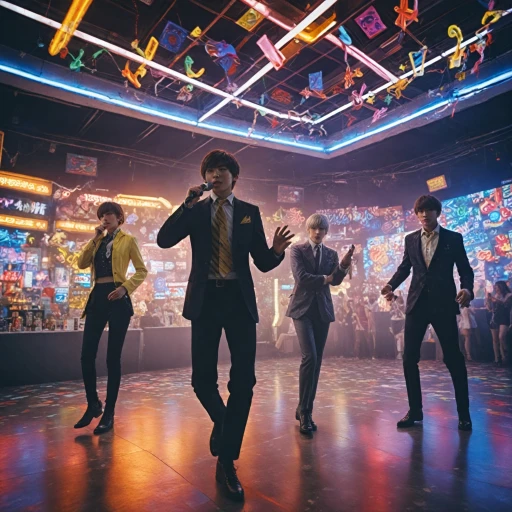
Understanding Gaming Console Logos
The Significance of Console Branding
When you delve into the world of gaming, logos can be seen as the vibrant face of a console or a game. They are more than mere symbols; they serve as a visual shorthand for the experiences, stories, and memories linked to iconic platforms and games. Be it Nintendo's pencil-drawn mushroom from the early days or the angular elegance of modern gaming logos – these icons tell a story. Gaming console logos are designed with the gamer in mind. Their creation involves understanding the audience's perception, values, and the emotions the game evokes. This identity is crucial in ensuring the game's place in the fast-paced, competitive gaming industry where fan comments and ratings can shape a game's success. The history of console logos demonstrates an intriguing evolution: from the bold simplicity of the classic Atari logo to the sleek, minimalist designs of today. Each logo becomes a touchstone, a gateway to those action-packed adventures. For fans, it's exciting to download them as icons, wallpapers, or profile pictures to express their passion and connection to the gaming franchises they cherish. The intricate design and evolution of these logos have a profound impact on how players interact with games. Who could forget the thrill of seeing the Tony Hawk's Pro Skater emblem and anticipating the thrill of high-flying tricks? It's the same for titles like Anger Foot, capturing the spirit of its unique gameplay through its visual branding. For more insight into the fascinating development of gaming logos, you might want to explore the evolution of Game Logos in this related exploration of Guitar Hero 3 ROM for PS3.The Evolution of Game Logos
The Transformation of Gaming Logos Over Time
The evolution of gaming logos is a fascinating journey mirroring the rapid advancements in technology and design trends. As video games have progressed from pixelated graphics to intricate, immersive worlds, their logos have transformed similarly. Icons and symbols associated with renowned games such as Tony Hawk's Pro Skater, a favorite for countless players, have adapted to fit contemporary themes and aesthetics.
Back in the days of early gaming consoles, logos were predominantly simple, focusing on instant recognition rather than artistic flair. However, as the industry burgeoned, so did the complexity and creativity involved in crafting these symbols. Consider the distinctive style of Free Lives' games, where bold, dynamic designs capture the fast-paced nature of their action adventures.
With the rise of digital platforms like Steam and gaming consoles such as the Nintendo Switch, developers and publishers have embraced more innovative designs, aiming to make an impact at first sight. From Devolver Digital's unique artistry to the minimalist approach taken by indie developers, the diversity in design strategies is evident.
As gamers continue to share their views and comments on various platforms, the influence of community feedback on logo design cannot be understated. Players may express their preferences for nostalgia-laced designs or their interest in sleek, modern icons. The collective voice of the gaming community often sways decisions, affecting not only logo aesthetics but also branding approaches.
Undoubtedly, each logo tells a story, encapsulating the essence of the game it represents. Whether it’s the aggressive stance of Anger Foot or the whimsical elements of an RPG, these designs are crafted to evoke emotion, stir curiosity, and ultimately, establish a lasting connection with the audience.
The Anger Foot Logo: A Case Study
A Deep Dive into the Anger Foot Logo
When it comes to creating a standout logo in the gaming world, the Anger Foot Logo offers a unique perspective that encapsulates the essence of the game it represents. Designed for the action-adventure game "Anger Foot" by developer Free Lives and publisher Devolver Digital, this logo is more than just an image; it's a visual powerhouse designed to convey the game's high-octane essence.
The design elements of the Anger Foot Logo are carefully crafted to reflect the game's narrative and dynamics. Featuring bold, aggressive lines alongside vivid colors, the logo is an immediate reflection of the game's "ass kicking" adventure and fast-paced action. The logo's distinctiveness is key to setting it apart in the crowded market of icons and video game ratings, creating an instant connection with players. Online platforms like Steam and Nintendo Switch make this game, along with its memorable logo, widely accessible for avid gamers. Players feel an immediate draw towards the logo, initiating discussions and comments in gaming forums about its impact.
User views and ratings significantly influence a game's reception, with the logo often serving as a catalyst for initial interest. This is evident in the influence that logos like Hawk Pro Skater and Tony Hawk Pro Skater have had on a game's identity. Just as these icons have become synonymous with their respective games, the Anger Foot Logo has the potential to do the same, capturing the intrigue of gamers worldwide.
Much like the perennial favorites of Pro Skater series, designing logos that echo the core themes of the game can enhance a game's allure and retention. It's a strategic edge for developers looking to make a mark in the industry. For gamers wanting to explore similar engaging topics, here's an eye-opening read: Exploring the Value of Pre-Owned Video Games.
The strategic crafting of a logo like Anger Foot's is an intricate dance between art and marketing. By aligning the visual identity with the game's core elements, developers ensure the logo is not just an afterthought, but a key player in the gaming narrative itself, spurring further exploration and downloads.
Impact of Logos on Player Perception
The Influence of Gaming Logos on Player Impressions
Logos serve as the visual representation of a brand, and in the gaming industry, they hold a significant amount of influence over player perception. These iconic images become a crucial part of how players identify and connect with a game. Whether you're an avid fan playing on the Nintendo Switch or exploring fast-paced action adventure titles like Anger Foot, logos play a pivotal role.
In the landscape of video games, where developers such as Free Lives and publishers like Devolver Digital compete for our attention, a logo needs to be more than just a decorative image. It becomes an icon that encapsulates the game's identity and ethos. The ability to recognize a game by its symbol can significantly enhance a player's experience, as it resonates with emotions tied to gameplay moments.
Frequently, players rely on logos as a point of engagement when navigating a crowded marketplace. Consider a scenario where multiple guides are available for download on platforms like Steam. In such cases, a vivid logo can tilt a player's attention toward a particular title, potentially leading to clicks, comments, and increased interest. The foot logo of Anger Foot, known for its bold colors and distinctive design, exemplifies this by sparking curiosity and encouraging further exploration.
Gaming reviews and news often emphasize player feedback, where ratings and comments disseminate insights into how players feel about a game. Logos, by extension, can influence these evaluations. For instance, a skater game like Tony Hawk's Pro Skater may evoke memories of past releases, thus affecting anticipation and reviews stemming from player nostalgia.
Engagement metrics such as login sign-ins and downloads can be swayed by the overall appeal of a game's branding, including its logo. Developers strive to craft memorable icons that not only attract but also retain player interest. As players visually dissect these graphics, the impressions formed can linger, affecting their overall gaming journey.
Designing a Memorable Logo
Crafting a Distinctive Gaming Identity
Designing a memorable logo for a gaming console or video game is a crucial step in establishing a brand's identity. A well-crafted logo not only captures the essence of the game but also resonates with the audience, leaving a lasting impression. This is particularly important in the fast-paced world of gaming, where players are constantly bombarded with new titles and updates.
When creating a logo, developers and designers must consider several factors:
- Relevance: The logo should reflect the game's theme and genre. For instance, an action adventure game like Anger Foot might benefit from bold, dynamic elements that convey movement and intensity.
- Simplicity: A simple design is often more memorable. Complex logos can be difficult to recognize at a glance, especially on smaller screens like those of mobile apps or the Nintendo Switch.
- Versatility: The logo should be adaptable across various platforms and media, from game steam pages to promotional materials. This ensures consistency in branding, whether the game is being played on a console or downloaded as a mobile app.
- Uniqueness: In a crowded market, standing out is key. A unique logo can set a game apart from competitors, much like how Tony Hawk's Pro Skater established its iconic identity in the skateboarding genre.
Incorporating these elements can significantly impact player perception, as discussed earlier. A well-designed logo not only attracts players but also enhances their gaming experience, creating a sense of connection and loyalty to the brand.
As the gaming industry continues to evolve, staying ahead of design trends is essential. Developers like Free Lives and publishers such as Devolver Digital are constantly pushing the boundaries, experimenting with new styles and concepts to capture the attention of gamers worldwide. With the right approach, a logo can become a powerful tool in a game's success, much like the stars that guide players through their gaming journeys.
Future Trends in Gaming Logos
Innovations in Game Logos: A Glimpse Ahead
Looking towards the future, logos in the gaming industry will continue to evolve, fueled by technological advancements and consumer trends. With the rapid growth of platforms like the Nintendo Switch and digital distribution services such as Steam, logos are not only a symbol but a central element in marketing campaigns.- Interactive Elements: Future logos might incorporate elements that respond when you interact with them on a mobile app or during a game on the Nintendo Switch, offering a more immersive experience.
- Personalization Options: As players seek more customized experiences, designers may enable users to modify logos slightly. This could affect their engagement with games like "Pro Skater" or "Action Adventure" genres.
- Augmented and Virtual Reality: With technologies like AR and VR expanding, logos might be designed with these formats in mind. Imagine viewing a logo through AR glasses and seeing it animate in 3D space.
- Environmental Consciousness: As awareness around digital footprints grows, developers might create logos that are not only visually appealing but also optimized for reduced data usage, benefiting both downloads and digital rights reserved priorities.
- Cross-platform Uniformity: Icons could present uniformity across various platforms. A logo seen on a Steam page might match its counterpart on a mobile app, ensuring consistent branding that enhances the user’s pro gaming experience.


